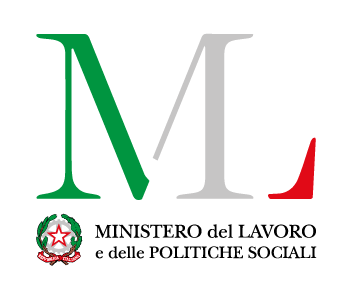Glossary
School-work alternation or SSGC
School-work alternation (now SSGC, Soft Skills and Guidance Courses) is an educational model aimed at establishing training courses within the scholastic cycle, both within the context of the high school system, as well as that of technical and professional education. In addition to basic knowledge, it is also aimed at providing young people with the skills needed to enter the job market by alternating study time with classroom training and on-the-job training, in order to gain “field” experience and overcome the “training gap” between academia and the workplace in terms of both skills and preparation.
With Law no. 107/2015, this new approach to teaching establishes a mandatory guidance course for students engaged in their second two-year programmes and their last year, in order to help them face the choices they will have to make once they’ve finished their studies; the school-work alternation period (since 2018/2019 named PCTO) consists of 90 in the final three-year period for high schools, 150 for technical institutes and 210 for professional institutes..
“Other” non-salaried workers
Non-employee workers with a prevalent role at the company (collaborators with VAT numbers and occasional service providers) that have been, or are expected to be, utilised during the course of the survey year, in addition to the other categories of non-employee workers that the company has planned to utilise, or rather coordinated and continuous collaborators (see the relative item).
Functional area
A grouping of specific areas of activity within the company; companies are asked to indicate the area into which the required figure(s) will be inserted. The functional areas consist of the following: Production or supply of goods and services; General management; Secretariat/staff/general services; Personnel, organisation of human resources; IT/information systems; Quality, safety and environmental certification; Administration/legal; Accounting/management control/finance; Sales; Marketing; Communication and public relations; Customer assistance; Design/research and development/technical department; Installation/maintenance; Quality control; Procurement/warehouse; Logistics, distribution, and transport.
Recruitment of employees
The number of recruitments correspond to the number of employees (excluding agency workers) that the companies have planned to introduce during the course of the survey year. For the purposes of the Excelsior survey, employees are any subjects who are registered as subordinate workers in the Unified Employment Ledger (e.g. including employees with fixed-term contracts, apprenticeship contracts, and “on call” contracts, in addition to those with open-ended contracts), as well as any who have been placed on redundancy.
Characteristics of the professional figure’s work activity according to the principles of the European Qualifications Framework
These consist of certain characteristics regarding the activity and the work context of the profession in question, identified based on the specific elements of the European Qualifications Framework (EQF). They therefore represent the skill and competence components that allow the outcome of a learning process to be placed into one of the eight levels envisaged by the EQF classification. A schematic and simplified survey of these elements has been opted for within the context of the Excelsior Information System, and is structured within the survey of:
- the application of standard/creative/innovative solutions;
- the coordinating role of other people;
- the presence of coordination, without or with partial autonomy, by a manager
For further information, see the “Recommendation of the European Parliament and of the Council of 23 April 2008 on the establishment of the European Qualifications Framework for Lifelong Learning”
ISTAT classification of professions
As of 2011, Istat adopted the CP2011 classification of professions, which was obtained as a result of updating the previous version (CP2001) and adapting it to the innovations introduced by the International Standard Classification of Occupations - Isco08 (www.istat.it). This is therefore the hierarchical classification tool of reference currently utilised in our country for the purpose of surveying professions.
The ISTAT 2011 classification is divided into:
- 9 large groups
- 37 groups
- 129 classes
- 511 categories
- 800 occupational units, to which all the professions currently on the labour market can be attributed.
For the purposes of data analysis and presentation, the professional figures sought by companies have been aggregated according to this hierarchical classification system.
Coordinated and continuous collaboration foreseen
This is to be understood as the forecasts for the use of coordinated and continuous collaborators for the survey year. These even include company directors, even if of marginal importance. The company is asked to only indicate the coordinated and continuous collaborators who will carry out the main activity for the company being interviewed, and whose contracts will enter into force during the period covered by the survey.
For more information on the current legislation, visit the website: www.jobsact.lavoro.gov.it/
Competences
Competence is the proven ability to use a structured set of knowledge and skills, acquired within formal, non-formal or informal learning contexts, in work, educational, or personal and professional development situations.
The following competences have been identified within the context of the Excelsior Information System: the ability to describe, communicate and promote company results, products and services in Italian; the ability to describe, communicate and promote company results, products and services in one or more foreign languages; the ability to use mathematical and computer languages and methods to organise and evaluate qualitative and quantitative information; the possession of digital skills and the ability to manage and produce visual and multimedia communication tools; the ability to solve problems (problem solving); the ability to work in groups and in a collective manner; the ability to work independently and with a spirit of initiative and entrepreneurship; flexibility and adaptability in the management of one’s own tasks; aptitude for energy savings and for reducing the company’s environmental impact; the ability to manage innovative solutions by applying robotics, Big Data analytics, Internet of Things, etc. to the business processes.
The above list is borrowed from the eight key competences needed for personal fulfilment and development, active citizenship, social inclusion, and employment. These key competences are governed by a Recommendation of 18 December 2006, in which the European Parliament and the Council invited Member States to adopt measures relating to “key competences for lifelong learning.”
For more information, see the Recommendation of the European Parliament:
http://eur-lex.europa.eu/legal-content/IT/TXT/?uri=celex%3A32006H0962
Contract
The types of contract for the professional figures that the companies plan to include in the workforce are surveyed, and are broken down as follows: employee contract (open-ended, fixed-term, apprenticeship, or “on call” contract), agency contract (formerly temporary), coordinated and continuous collaboration contract, other contracts for non-salaried workers (e.g. self-employed workers, non-employee family collaborators, non-employee operational partners, non-subordinate cooperative workers, paid trainees)
If fixed-term contracts are expected to be utilised, the company is also asked to specify the reasons for which this type of contract is intended to be used, indicating one of the following: new staff trial period, temporary staff replacement (for maternity, personal leave, holidays, illness), coverage of peak business periods, seasonal work
For more information on the meanings of the various contract types, see the website: www.lavoro.gov.it/
Difficulty in recruiting staff
This is a declaration made by the company regarding difficulties it has encountered in recruiting suitable candidates to fill the open professional position in the area in which it operates, and the relative reasons. The difficulties are divided into two main reasons (limited number of candidates or inadequacy of candidates), to which an “other” category is also added, to be specified.
Company size
The business size classification is determined based on the number of employees, using the following groupings: 1 to 9 employees (micro enterprises); 10 to 49 employees (small enterprises); 50 to 249 employees (medium-sized enterprises); 250 to 499 employees (large enterprises), and over 500 employees (very large enterprises). During the data processing and presentation phase, the local units of medium-large enterprises were classified based on the size classification of the companies they belong to.
Inflow (or contract activations)
The inflow corresponds to the number of employment relationships or other types of contracts (agency workers, collaborators, self-employed workers, etc.) that the companies interviewed expect to activate during the survey’s reference period. These activations are broken down by professional figures and characteristics. Conversions of existing personnel contracts are excluded, and activations with a duration of less than 20 business days are not reported.
Experience
A characteristic associated with the professional figures that the companies plan to hire, to be understood as previous work activities carried out by the candidate suitable for covering the open position. If necessary for the recruitment, it is divided into general work experience, specific experience in the profession, or specific experience in the sector in which the company operates.
Age
A characteristic associated with the professional figures that the companies plan to hire. For the purposes of the survey, the information is broken down by age group (24 and under, 25-29, 30-44, 45-54, over 54). Companies may indicate age as an irrelevant characteristic, with any age being considered “equally suitable.”
Excelsior basic professional figures
These are the approximately 4,000 entries that make up the basic dictionary of the professions used for the survey.
The nomenclature is updated annually based on the reporting of any new figures by the companies interviewed.
For presentation purposes, the Excelsior basic professions have been classified according to the ISTAT 2011 classification of professions, which ensures consistency with the European-level classification, given the link between the Italian Istat 2011 classification and the ISCO 2008 classification, as well as the possibility of associating a unique meaning with the descriptions of the figures through the determination of the classes to which the figures themselves belong, and, consequently, better control over the correspondence between the description of the figure by the company and the codified description.
In-house training
Corresponds to the training and professional updating of staff carried out by the company during the previous year and during the survey year. It is broken down into different delivery methods (internal or external courses, coaching with internal staff, and other forms, such as short seminars, self-learning, etc.). In order to assess the investment made in explicit training (with courses) by the company, companies are asked to quantify the number of employees that they have engaged in professional training and updating activities (excluding coaching, seminars and self-learning) during the previous year and during the survey year.
As with previous editions, however, coaching is included among the types of in-house ongoing training (albeit in a broad sense).
Entry-level training (need for)
A characteristic associated with the professional figures that the companies plan to hire. This is a declaration made by the company regarding the need to carry out additional training activities for the professional figure to be included in the workforce. These training activities can be carried out through in-house or external courses, or in other ways, including coaching with internal staff.
Gender
A characteristic associated with the professional figures that the companies plan to hire, to be understood as a preference indicated by the company regarding the gender deemed most suitable for carrying out the tasks associated with the open position. Companies can also indicate gender as an irrelevant characteristic.
Immigrants (hires)
The hiring of immigrants refers to the inflow of personnel of non-Italian nationality.
Companies
The companies considered in the Excelsior survey are the legal/economic units that produce goods and services that can be sold, and that, according to the laws in force or their own articles of association, have the right to distribute the profits realised to their owners, whether private or public. The person in charge is represented by one or more natural persons, individually or associated, or by one or more legal persons. The companies include all the legal forms envisaged by the Business Register, and, consequently, no information is currently collected within the context of the Excelsior survey relating to self-employed workers and freelancers.
Innovative/investing company
A company that has declared to have made innovations (development of new products or services) or investments (e.g. in energy-saving or digital transformation products/technologies) during the year prior to the survey year.
Fields of study
Breakdown of a specific training course in vocational education, in secondary school, or at the university level
For details about the individual qualifications and the relative fields of study used in Excelsior, see the classifications document in the survey methodology section.
Agency workers (temporary)
Agency work entails three subjects: the worker, the user, and the employment agency. Two different contracts are stipulated between these three subjects: the work agency contract, stipulated between the administrator and the user, and the employment contract, stipulated between the agency and the worker. The agency employment relationship can be fixed term or open-ended
In the Excelsior survey, companies were asked to indicate whether they intend to make use of agency contracts to hire the professional figures they need during the reference period.
Levels of education and qualifications
The levels of education and qualifications are those considered by the scholastic system, and usually coincide with the classifications established by the Ministry of Public Education. In particular, the following levels of education have been utilised:
- no specific training (mandatory schooling)
- vocational training qualification or professional diploma (up to 4 years of study) obtained at a regional vocational training centres or a state vocational institute
- diploma (5 years); for this level of education, the request for further post-diploma training on the part of the companies was also surveyed
- university degree; for this level of education, the companies’ preference for a short (3-year) or specialised (5-years) degree was also surveyed, as was the need for post-graduate training.
For each level of education (excluding mandatory schooling), the individual uniform qualifications and/or those belonging to similar areas of competence are grouped by field of study.
For details about the individual qualifications and the relative fields of study used in Excelsior, see the classifications document in the survey methodology section.
Employment levels
The employment levels are classification units used to group the various professional profiles. This professional classification system determines the particular legal regime to which the worker is subjected for the purposes of calculating their wages and contributions. In this case, the employment levels are inferred from the collective labour agreements and the classification envisaged by the INPS social security forms (form DM10 for the payment of contributions).
In this manner, the levels of employment can be broken down into:
- managers: workers who “hold positions in the company characterised by a high level of professionalism, autonomy and decision-making power, and who carry out their functions in order to promote, coordinate, and manage the achievement of the company’s objectives.”
- middle managers: employees who, although not belonging to the category of managers, perform functions of an ongoing nature of significant importance for the purposes of executing and implementing the company’s objectives.
- white-collar/office workers: those who professionally lend their services in the employ of a private business for collaboration purposes, both conceptually and in terms of organisation, with the exception of any service that merely consists of labour.
- blue-collar workers: workers whose activities are characterised by “collaboration within the company”, and consist of a generic contribution to the production process, achieved through the mere implementation of the instructions received.
For the purposes of the survey, the “middle managers” and “white collar workers” levels are considered as a joint category.
Geographical breakdowns
These correspond to the groupings of the Italian regions based on 4 geographical areas:
- North West: Piemonte (Piedmont), Valle d’Aosta (Aosta Valley), Lombardia (Lombardy), and Liguria;
- North East: Veneto, Trentino Alto Adige, Friuli Venezia Giulia, and Emilia Romagna;
- Central: Toscana (Tuscany), Umbria, Marche, and Lazio;
- South and the islands: Abruzzo, Molise, Campania, Basilicata, Puglia (Apulia), Calabria, Sicilia (Sicily), and Sardegna (Sardinia).
Business sectors
The business sectors considered by the Excelsior Information System correspond to 27 groups of economic activities specifically established based on the theoretical sampling plan. These groupings include the divisions (2-digit codes) and groups (3-digit codes) envisaged by the official ATECO 2007 classification of economic activities. ATECO 2007 constitutes the Italian version of the European nomenclature, Nace Rev.2, published in the Official Journal on 20 December 2006 (Regulation (EC) No. 1893/2006 of the EP and of the Council of 20/12/2006).
For details on the individual economic activities that fall into each sector, see Appendix 1.
Replacement or non-replacement
The term recruitment for replacement means the company’s indication as to whether the professional figure sought is intended to replace a similar professional figure who has recently left the company (or who will leave the company during the year in question). It should be noted that, for figures that are not intended to replace similar outgoing figures, the company is asked to specify whether these are already present within the company.
Internships and traineeships
Curricular or non-curricular internships are periods of “on-the-job” training with an employer, with or without compensation. The curricular versions expressly exclude mandatory school-work alternation pathways, which are surveyed separately (see the relative item).
Training activities carried out through internships or traineeships were considered in the Excelsior survey.
The number of internships/traineeships implemented during the year prior to the survey year – whether paid or not – and the relative average duration (3 months or more) was also surveyed. The company was also asked to indicate the number of these trainees that were expected to be hired during the survey year.
For further information, visit the website: www.lavoro.gov.it/
Provincial Local Unit
The term Provincial Local Units (PLUs) conventionally means the local units of the same company located within the same province. A PLU’s personnel (employees and independents) correspond to the sum of the relative personnel of all the PLUs in the province.
The survey data statistical inference procedures were carried out based on the employees’ distribution by provincial local unit.





